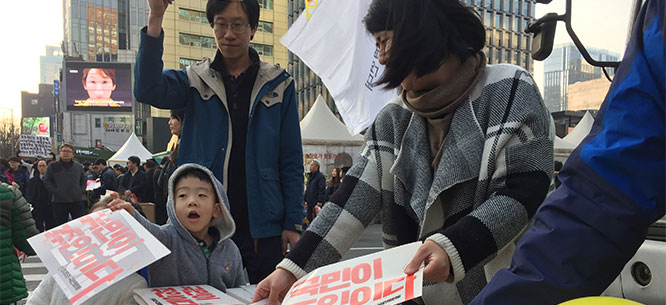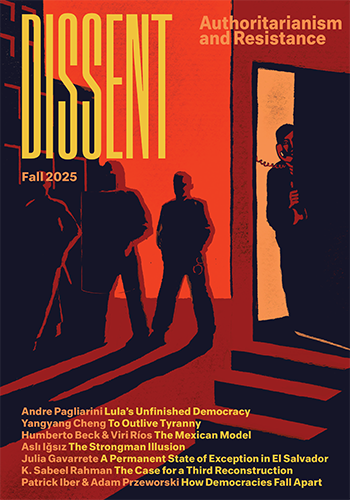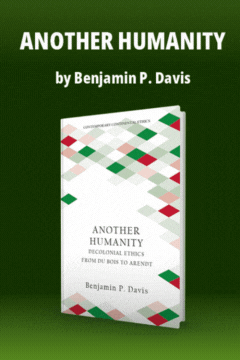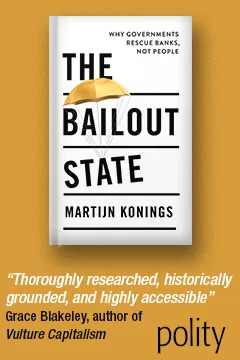Revolution by Candlelight: How South Koreans Toppled a Government
Revolution by Candlelight: How South Koreans Toppled a Government
South Korea’s Candlelight Revolution was the culmination of a sustained protest movement that brought out over 16 million people—almost a third of the country’s population.

In October 2016, images of a middle-aged woman wearing white-rimmed, designer sunglasses started to pop up all over South Korean TV. My Korean is far from fluent, and the pictures smacked of a celebrity scandal, so I didn’t pay much attention at first. Within weeks, however, these pictures and many others were flooding the living room of the apartment on the Yonsei University campus in Seoul where my family had moved a month earlier. I armed myself with a coffee-stained dictionary, and together with the rest of the country I learned about a woman named Choi Soon-sil, confidante of former South Korean president Park Geun-hye and daughter of a notorious shaman who had helped a younger Park converse with her parents from beyond the grave. (Park’s father—the president of South Korea a half-century ago—and mother were murdered in separate incidents in the 1970s.) Without any credentials or authorization, Choi had advised the president on numerous policies and illegally colluded with big businesses such as Samsung. This Korean “Devil Wearing Prada” helped spark the Candlelight Revolution: a movement that brought millions to the streets and led to a rare—perhaps unprecedented—peaceful and democratic overthrow of a democratically elected national leader.
The scandal that became known as “Choi Soon-sil gate” centered on emerging stories about bribes that President Park received in return for favors to businesses, including one that catapulted an heir at Samsung (which constitutes almost 20 percent of the South Korean economy) into a position to succeed the empire’s throne. The media also reported at the beginning of 2017 that the president had collaborated with her chief of staff and culture minister to create “The Blacklist”: a registry of nearly ten thousand filmmakers, writers, artists, and academics deemed “anti-government” who were denied state funding during President Park’s tenure. Facts and gossip collided in the public sphere, placing “Choi Soon-sil gate” into the hands of South Korea’s parliament, courts, university campuses and classrooms, and free press—all loci of fear during the country’s dictatorship era, which ended only thirty years ago. A series of revelations ultimately led to arrests and jail time for Choi, Park, various ministers and associates of the former president, and, most astounding to Koreans, the “Crown Prince of Samsung,” Lee Jae-yong.
South Korea’s Candlelight Revolution was the culmination of twenty successive Saturday night rallies that brought out over 16 million people from a population of 51 million. By this spring, Park’s support had fallen to 4 percent, and even that number might have been a statistical aberration. On March 11, 2017, hundreds of thousands of Koreans rejoiced in downtown Seoul after the country’s parliament and constitutional court confirmed the impeachment of President Park on bribery and corruption charges. The March 11 “Celebration of Democracy” was a political Mardi Gras, with floats and costumes and women dancing under bright green electrified umbrellas. “We are so happy!” read one popular placard; on another, “This is our country; this is our justice.” Politicians across party lines acknowledged that it was the street protests throughout the country that compelled parliament to make a motion for impeachment. The wide margin in favor of impeachment (234–56) was astonishing, as was the constitutional court’s 8–0 vote to uphold the parliamentary decision.
On the streets of Seoul, “The people are sovereign!” signs signaled that, for the first time in South Korea’s sixty-nine-year history, a broad spectrum of society had the chance to steer the country’s course in a nonviolent, public forum. This kind of people power looks much different from the vitriolic, racist, and misogynistic politics undergirding the right-wing populism on the rise around the world. Humor was a constant from the start of the Candlelight Revolution. Street posters, newspaper cartoons, TV skits, blogs, outrageous sculptures, and performance pieces filled even the coldest, wettest winter nights with hope. Since assuming office in February 2013, President Park had tightened restrictions on press and artistic freedoms. A satirical sketch that aired on an early November 2016 episode of South Korea’s Saturday Night Live marked a welcome change. The show’s producers ran a condemnation of Park and her advisers in the form of comedian Kim Jun-hyun as Choi Soon-sil’s daughter. His character was a spoiled brat centaur, dressed in an English riding suit, who shrieked to Choi and President Park (wearing the regalia of a Roman Emperor), “Buy me a horse! Buy me Prada!” (Choi had demanded millions of dollars from Samsung to buy show horses for her daughter, who was at the time hiding out in Germany.)
The protests were also notable for the large numbers of very young children who accompanied their parents. In the winter, organizers handed out mitten warmers and hot chocolate, while in spring they switched to cotton candy and balloons. Fireworks and live music were a mainstay. Middle- and high-school students wearing uniforms and name tags openly spoke on television about “democracy” and “our country” and “the future.” Their very presence evoked the tragic April 2014 Sewol ferry disaster in which 304 people drowned—including 250 teenage students on a school excursion—as a result of gross negligence, which a woefully incompetent government response made much worse. In July 2014, grieving parents and friends set up a small encampment in the center of Seoul to demand answers from a bewilderingly indifferent President Park, and small yellow lapel ribbons denoted their cause. Her failure to investigate fed into the broader Candlelight movement. By early 2017 millions of Koreans, including parliamentarians, were wearing the yellow badge and demanding accountability.
All of my students—including ones who had voted Park into office—supported her impeachment by the time parliament affirmed it on December 9, 2016. Every one of them was either actively marching, organizing, and blogging, or at least reading the news with intense interest. Many openly discussed the scandal surrounding Park, including some whose parents had urged them to avoid involvement lest their permanent records get marked and hurt their chances of future employment.
Early on a number of my students asked, “Are they going after her because she’s a woman?” There was good reason for their skepticism, given the relatively small scale of the graft and bribery tied to Park so far ($68 million, compared with the hundreds of millions that male politicians have handed out and taken in without censure). Excessive attention was paid to designer handbag purchases. As the scandal unfolded, however, it became clear that something much bigger than a gendered witch hunt was underway. The movement against Park represented anger built up over decades at people and institutions in South Korean government, academia, media, and, most important, big business that seemed to operate outside the rule of law.
The Candlelight Revolution sprang from a collective determination to act against a system in which only the wealthy and connected appear to advance. South Korea has a significantly higher level of household debt than other rich nations—largely spent on mortgages and private cram schools that promise to help kids as young as two years old pass entrance exams to the country’s leading public schools, which dangle the possibility of a better future. One popular placard at the protests read, “Toward a country of equal opportunity!”
The Candlelight demonstrators drew strength from the living memory and ongoing reality of social inequality in South Korea. In August 1945, during the same week that the thirty-five-year Japanese occupation of Korea ended, American officials divided the Korean peninsula into U.S.- and Soviet-controlled spheres of influence—a decision Koreans were only informed of after officials in Washington had drawn a line through the 38th parallel creating the northern and southern zones. The South Korean leaders that emerged with U.S. political and financial backing determined that it was far simpler and much more lucrative to keep in place people who had previously worked for Korea’s Japanese overlords. Policemen, judges, soldiers (including Park Geun-hye’s father, Park Chung-hee, who ruled South Korea from 1961 to 1979), bankers, teachers, doctors, lawyers, and all sorts of businessmen with ties to the Japanese colonial authority became the foundation of the unequal political and economic order of South Korea.
The devastating war for control of the Korean Peninsula, which led to the death of roughly one in eight Koreans, ended in 1953 with an armistice between North Korea and the United States. While the Chinese and Soviet troops withdrew from the north, the United States permanently stationed soldiers in the south. Well into the 1960s, American diplomats in Seoul routinely disparaged South Korea’s economic conditions as comparable to the poorest of African states. President Park Chung-hee favored a corporatist path in which family-owned conglomerates such as Samsung, LG, and Daewoo—some founded during the Japanese era—received massive state funding (including redirected aid money from the United States and Japan), protection from competition, and excessive tax incentives that transformed them into the behemoths that dominate now. Today, the top twenty companies in the country are responsible for 85 percent of South Korea’s GDP. The country’s dictators cemented their rule through cronyism and intimate relations with these companies, and development became the excuse to deny people many basic human rights.
Violent political upheaval and severe censorship defined people’s lives. Many dissidents were “disappeared.” During the 1980 Gwangju uprising, the pinnacle of repression among many other moments, U.S.-sanctioned Korean military helicopters fired on student demonstrators. In the summer of 1987, Yonsei University student, Lee Han-yeol, died after police hurled a tear gas canister at his head. Shortly before his funeral—attended by over a million people—the government acceded to protesters’ demands for constitutional changes that resulted in increasingly accountable and transparent elections during the 1990s. Since then, the North and South Korean economies have diverged dramatically. South Korea has the world’s eleventh largest economy. North Korea’s GDP remains close to the bottom, and its surreal political system causes international bewilderment. Notwithstanding movement towards greater political openness in South Korea, the latest generation of corporate leadership is seen as entirely self-involved and disinterested in overall national well-being—conditions ripe for reestablishing the collusive relations with corrupt governments that sustained the earlier dictatorships.
The Candlelight Revolution represents in some ways an alternative to the region’s potentially cataclysmic violence. The perils of any war in Korea are clear; the nightmare of nuclear warfare has become more vivid under the combustive relationship between two of the world’s most irresponsible leaders, Donald Trump and Kim Jong-un. In the event of war in Korea, the United States would assume operational control of the South Korean military, and, as Secretary of Defense James Mattis notes, “A conflict in North Korea would be probably the worst kind of fighting in most people’s lifetimes.” The U.S. security arrangement with South Korea obliges the 28,500 American troops stationed in South Korea to come to the country’s defense; tens of thousands of U.S. soldiers and sailors at bases in Japan and Guam would also become involved. In addition to 600,000 South Korean troops, over a million soldiers in North Korea, and millions more reservists in the South and North, hundreds of thousands of civilians in Seoul would be in the line of fire during the first moments of any war, including some of the 200,000 American citizens living in South Korea. Millions of Koreans would die.
Nonetheless, Trump continues to insist that “all options are on the table” when it comes to conflict with North Korea. Senator Lindsey Graham has intoned that a possible American-led strike against North Korea wouldn’t be too bad for Americans because “the war would be over there, not here.” Meanwhile, tougher economic sanctions on North Korea are Washington’s main plan for dealing with Kim Jong-un’s regime, even though the very people designing these plans admit that sanctions alone won’t work. Suggestions for some sort of diplomatic negotiations are coupled with Trump’s tweets that cause further confusion and even danger. On July 26, 2017, there was a nine-minute pause between two tweets concerning a disgraceful shift in U.S. military policy concerning transgender service people. In the interim, numerous policy planners and military strategists tasked with North Korea believed that the Commander in Chief might be authorizing a strike against Pyongyang. And the president’s off-the-cuff “fire and fury” and “locked and loaded” rhetoric during his mid-August golfing holiday have Asia on edge and Washington spin doctors doing damage control.
On May 9, Moon Jae-in was elected South Korea’s new president, and his first executive order established a commission to create jobs and combat structural inequality. This was because these issues—not North Korean missiles—fueled the winter 2017 revolution. Yet politicians and media around the world, especially in the United States, are eager to make his election about North Korea. Someone Googling “Korea” will find a lot about ballistic missiles and belligerency, but little about what is perhaps the most significant year in South Korea’s history. International headlines immediately following Moon’s inauguration speculated about his possible “anti-Americanism” or “pro-North” leanings. He has tried not to take the bait, promising both a “bold new vision” for peace in Korea and to stand “shoulder-to-shoulder” with the United States.
The reality today is that most South Koreans—especially those in their twenties and thirties, who face among the highest youth unemployment rates in any rich nation—simply do not want to bear the financial burden of making the two countries one again, and almost no one is idealistic enough to believe that both sides will lay down arms at the border and embrace. In the 1990s, Koreans held conversations about the “German Model” for reunification. By the early 2000s, Vietnam became a more plausible future. Now it is difficult for many to do more than imagine some sort of two-state system that recognizes familial and historical ties. Although it’s extremely difficult to know, this scenario may also be on the minds of Pyongyang’s elite. Two such young men born in 1994 in North Korea who escaped across the border in 2013 to Seoul recently spoke at an off-the-record event, and they didn’t miss a beat in describing the future they envisioned: “In Pyongyang, building a better North Korea.” South Koreans are now able to hear many similar stories firsthand on South Korean–based websites and chatrooms that permit once forbidden information about North Koreans.
South Koreans will find it challenging in the coming years to keep attention trained on what they want for their country and for the broader Korea because the North Korean vortex will likely define Moon’s presidency. In June he visited Washington on a trip widely seen as a way to legitimize his presidency—in many ways the most democratically legitimate presidency since South Korea was founded. But the sad death of Otto Warmbier, the American college student imprisoned in North Korea, overshadowed the visit. Most news reports focused on President Moon’s “strong condemnation” of North Korea’s “cruel actions” rather than the remarkable events that led to his taking office, let alone his personal history as the son of North Korean refugees. The story of the Candlelight Revolution could inspire people in the United States and many other countries who are fighting for democracy and against corruption, but that can only happen if people hear the story in the first place.
After one hundred days in office Moon’s approval ratings are high at 78 percent. As Pyongyang persists with its “all missiles all the time” approach to international relations, Moon has struck a strong tone. He has implored his North Korean counterpart, Kim Jong-un, to understand that his words are not the “sophistry” that Pyongyang derides them as but arguably the only possible future for all Koreans. “We have reached the tipping point of the vicious circle of military escalation, and thus, the need for dialogue is more pressing than ever before,” said Moon. “Now we are left with North Korea to make its decision.”
Any plan that does not include South Korea as an equal at the negotiating table will fail. The calls by some in Washington for diplomacy with Pyongyang focus on weapons but ignore North Korea’s long sought peace treaty to end the 1953 armistice—as if all of this sprang from nowhere. More troubling, others in D.C. favor an “America first” military approach that would immediately involve South Korean and Japanese troop participation, too, making “kinetic” in this instance just another word for “slaughter.” The chance not to have this war exists, and learning from the Candlelight movement is the surest course for this alternative future.
Alexis Dudden is professor of history at the University of Connecticut.






